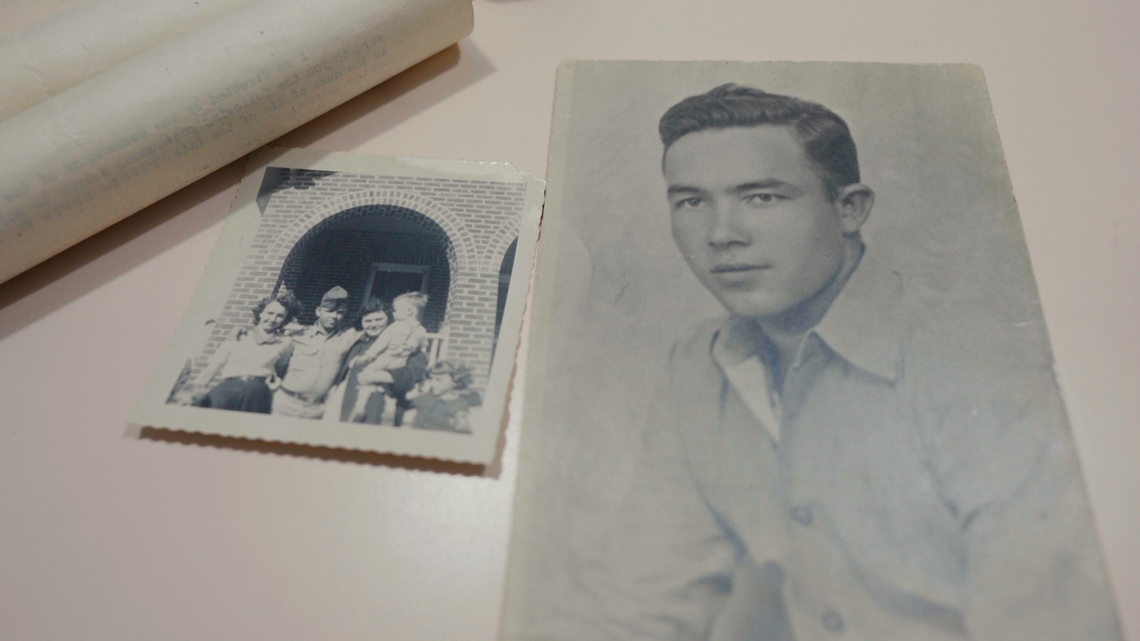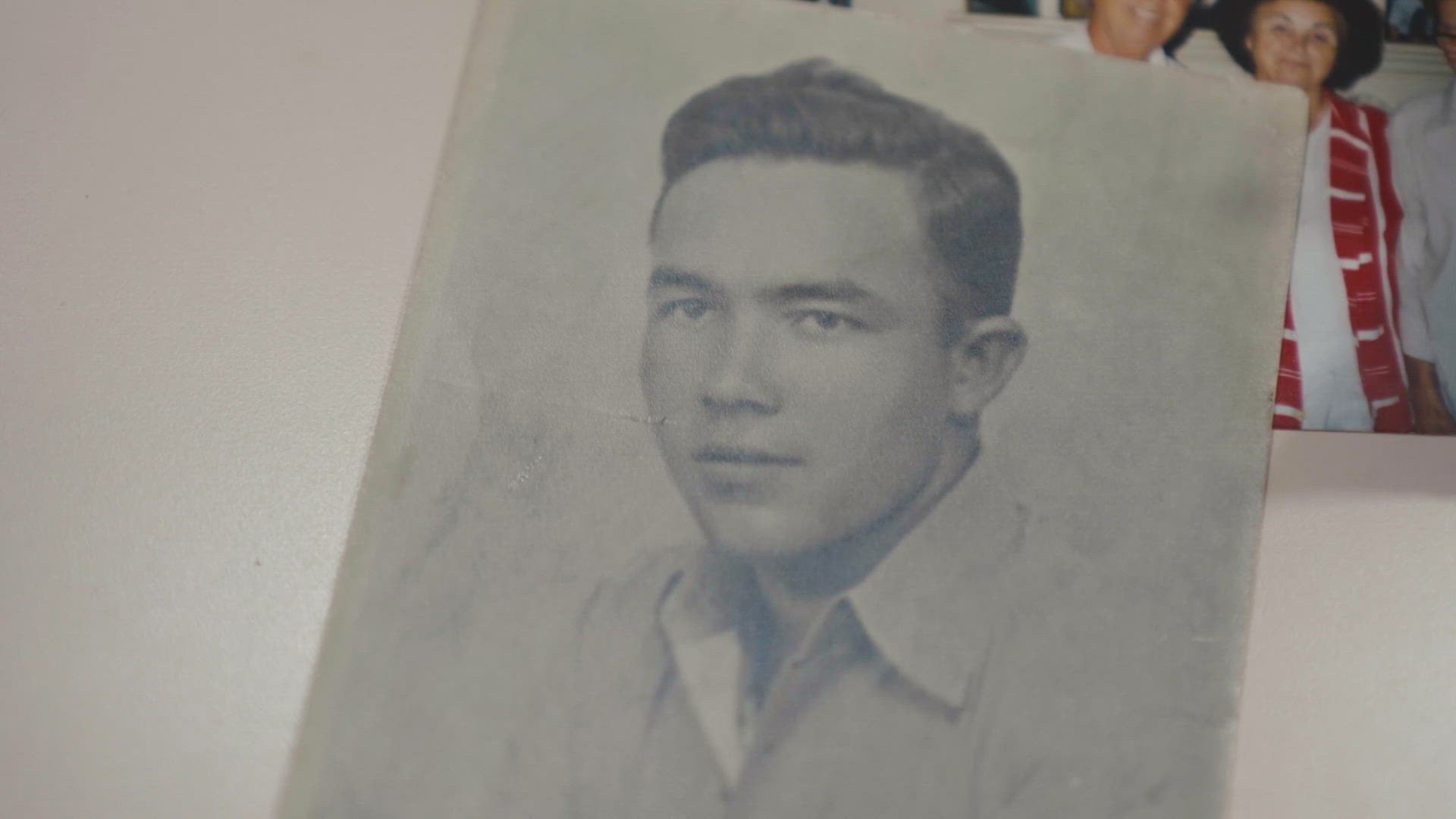CONCORD, Ohio — As the nation marks Independence Day on Thursday, a Lake County family will observe the occasion as they have for decades: in solemn reflection.
July 4 marks 80 years since a young Marine named Lewis McIntosh died while fighting in the Battle of Saipan. His nieces and nephews have known Uncle Lewis only through photos and family stories.
"He enjoyed life, you know?" his nephew Ted Mangosh says.
One of five children from a South Carolina family, Lewis loved them all, but was particularly fond of little sister Juanita.
"I guess he was quite the character," Mangosh, Juanita's son, told us. "She used to tell stories about him all the time as they grew up, and they were very close."
Ted, David Mangosh, and Debbie Dale have all gathered in sister Gloria "Cookie" Dugger's home to share stories of Uncle Lewis, an 18-year-old Marine in World War II.
"He was an island hopper," Ted explained. "They would go from island to island — clearing the islands and getting ready to set up an Air Force base that can reach Japan, and that was their goal."


Lewis was on Saipan, considered part of the Mariana Islands. In March 1944, the Joint Chiefs of Staff determined capturing the chain would be the next step in bringing down the Japanese Empire. Saipan was selected as the first target in the invasion.
The Battle of Saipan started on June 15, 1944, and lasted until July 9 a few weeks later. The United States was victorious, but it came at a heavy cost: roughly 3,500 Marines died.
"They thought he had gone after ammunition, and they don't know what happened," Gloria said of her Uncle Lewis.
During this time, the United States banned the return of overseas war dead. Money went to fighting and soldiers were buried in temporary military cemeteries throughout the European and Pacific theatres. Without a body or ID tags, families like Lewis McIntosh's were left to wonder.
"She never knew if maybe he was in a prison camp or if he'd been tortured or what really happened to him," Gloria recalled of the emotions her mother experienced.
As years passed, Juanita married and eventually settled in Northeast Ohio. As she raised her own family, Lewis was never far from her mind.
In her late 80s, Juanita learned of repatriation efforts and how science was helping in identification, so she submitted her DNA hoping for answers. Sadly, she passed away in August of 2021 at the age of 92.
The family all but forgot about the DNA, until they received a phone call this spring, out of the blue.
"'We have information about your Uncle Lewis and I'd like to talk to you,'" a voice said. It belonged to Donovan Mansfield, head of the United States Marine Corps Repatriation Program.
"We have individuals all over the world that are in sites, working off historical data, trying to find remains that have not been recovered yet," Mansfield told 3News in a recent interview.
These programs exist for every branch of the military. Mansfield and his team have cases from World War II, Korea, Vietnam, and even the Cold War.
As science and technology advance, more remains are being identified. And in an act of abiding love, Juanita's DNA is bringing her brother home.
"My mom would've been thrilled," Gloria said holding back tears. "I mean, she could finally say, 'OK, I know where my brother (is), what happened to him.'"
On June 4, an ID brief took place at the Dugger home. The family would finally get some answers, and they learned more about the battle that claimed Lewis' life, where he was buried, and what it took to identify him.
"It is a massive, massive effort that leads to where we are sitting today," Mansfield admitted.
Part of the meeting includes making final arrangements to honor their uncle, and Lewis' living relatives decided he will be buried in Arlington National Cemetery. He will receive full military honors provided and paid for by the U.S. government, a commitment to our nation's servicemen and women the military is honored to uphold.
"It doesn't matter what branch of service — no one is left behind, and we do mean that literally," Mansfield said. "Even going back to our Marines that served in World War II. We're doing everything in our power to bring you home to your loved ones and that you are never forgotten," Mansfield said.
The day is about Private Lewis McIntosh and bringing him home after 80 years, but bittersweet thoughts of Juanita are never far away.
"She would have been the happiest person in the world to have gotten that phone call," Gloria remarked. "But she's in heaven with him now, so that's OK."
Relatives of Lewis McIntosh will travel to Washington, D.C., for services, which are expected to take place sometime this fall.
The Defense POW/MIA Accounting Agency (DPAA) has identified and returned the remains of roughly 1,000 World War II troops to their families since the 1970s. The DPAA is part of the Department of Defense, and the agency is currently searching for missing service members from World War II and other conflicts in 45 different countries.
MORE FROM 3NEWS...
- Shaker Heights' Robert P. Madison recalls his time serving with the 92nd Infantry in World War II
- US Military veterans take ride of their lives thanks to Dream Flights
- Three generations and the gift of time: A Bibb family story retold for Father's Day
- Cleveland VA program transforming exercise for those with paralysis

